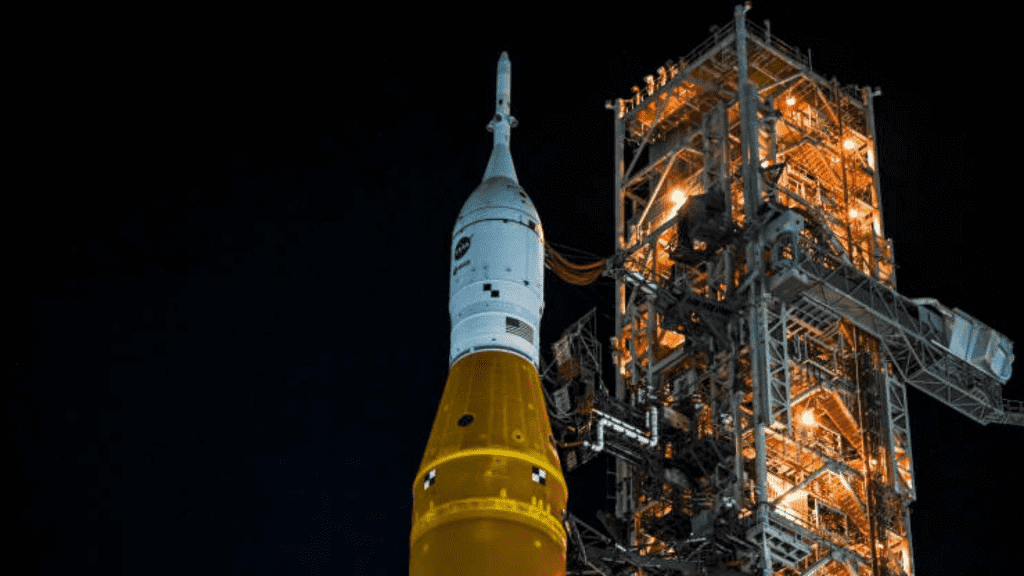On Saturday, NASA called off its latest attempt to launch the historic Artemis 1 moon rocket due to a fuel leak discovered during tanking. Technical concerns had delayed the spacecraft on the launchpad for the second time in five days.
NASA’s new moon rocket suffered another deadly fuel leak on Saturday, prompting launch controllers to cancel their second attempt to send a crew capsule into lunar orbit with test dummies.
The previous attempt earlier this week was also plagued by hydrogen leaks, but those were located elsewhere on the 322-foot rocket, NASA’s most powerful yet created.
There was no hint on when NASA might attempt again. After Tuesday, there will be a two-week launch blackout period. After that, extensive fuel leak repairs may necessitate hauling the rocket off the pad and back into its hangar, extending the flight into October.

Charlie Blackwell-Thompson, the launch director, and her team attempted to fix Saturday’s leak in the same manner they did the last time: by pausing and resuming the flow of super-cold liquid hydrogen in the hopes of closing the space around a seal in the supply line. They tested it again, and they also pushed helium through the line. However, the leak remained.
After three to four hours of pointless effort, Blackwell-Thompson called it quits.

“We have a scrub for the day,” announced NASA’s launch commentator, Derrol Nail.
NASA plans to launch the crew capsule atop the rocket around the moon, pushing it to its limits before people take it out on their next mission. If the five-week test using dummies goes well, astronauts may be able to fly around the moon in 2024 and settle on it in 2025.
The weather cooperated early Saturday as the launch team began loading almost 1 million gallons of fuel into the Space Launch System rocket after days of severe weather. However, minutes into the flight, hydrogen fuel began to leak from the engine portion at the bottom of the rocket, violating safety regulations.

Hydrogen fuel escaped from elsewhere in the rocket during Monday’s launch attempt. Over the last week, technicians tightened the fittings, but Blackwell-Thompson warned that she wouldn’t know if everything was tight until Saturday’s fuelling.
On Monday, a sensor showed that one of the rocket’s four engines was too warm, but experts later confirmed that it was really cold enough. This time, the launch crew intended to overlook the defective sensor and depend on other equipment to guarantee that each main engine was appropriately cooled.
Mission managers recognized the additional risk provided by the engine malfunction and a related issue: cracks in the insulating foam of the rocket. However, they realized that other issues, like fuel leaks, could still cause another delay.

The $4.1 billion test flight is the first stage in NASA’s Artemis program, named after Apollo’s twin sister in Greek mythology.
Years behind schedule and billions over budget, Artemis aspires to create a long-term human presence on the moon, with the crew eventually staying for weeks at a stretch.
NASA’s unexpected delay might be a setback for the agency, which is eager to show off its progress in sending humans to the lunar surface for the first time since the Apollo 17 mission in 1972.

This uncrewed 38-day voyage to 40,000 miles beyond the moon and back must be successful before astronauts can board a second test flight in 2024, followed by a moon landing on Artemis III no earlier than late 2025.


